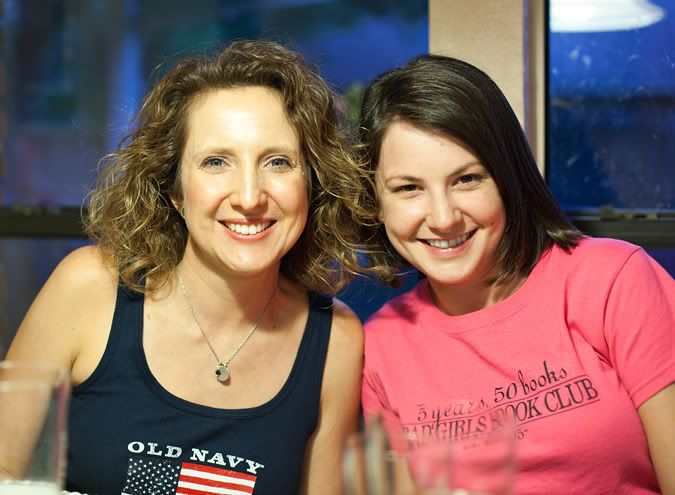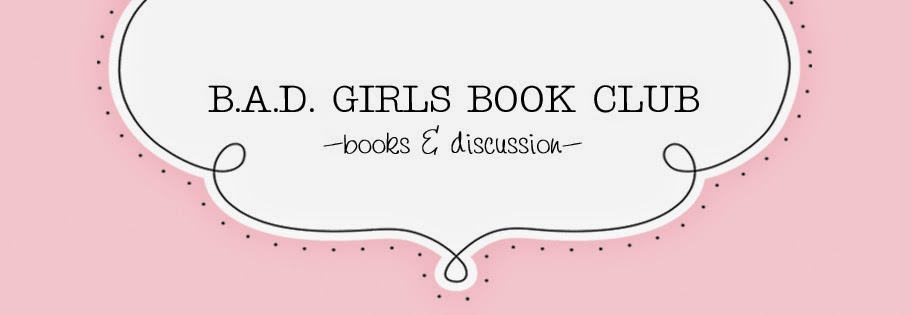Author: Kathleen Grissom
One-sentence summary: An orphan from Ireland finds herself a servant in the kitchen house of a tobacco plantation living with the slaves.
B.A.D. Girls Book Rating: 8
Our favorite thing about it: We loved the story and the characters.
Our least favorite thing about it: We didn’t like that most of the story was so depressing with very little hope.
Main Topics of Discussion: Slavery, Relationships, Family, Hope, Loyalty, Hate, Survival
Our “favorite” quote: “That day I was awakened to a new realization and made aware of a line drawn in black and white, though the depth of it still had little meaning to me.”
Notes: We all rated this book favorably, but were all unanimous in feeling that the story was littered with one depressing thing after another. We understood that writing about slavery on a plantation in the 1700s is a depressing subject. What made it more depressing (and realistic) was the feeling the author created that the characters had few choices available to them. There was very little hope and a lot of helplessness. So, some of the heart wrenching story elements were hard to read, especially since they were not really countered with much hope.
The one bright spot were the relationships the slaves had with each other. They were able to tenuously maintain their family ties as long as one of them was not sold. But, because of their positions with their owners, they were able to stay together for the most part and gained a lot of happiness and stability from their family. They were fiercely loyal and would sacrifice themselves for each other. They kept each other well mentally and physically.
What was unique about this story about slaves is that the owners were not immune from heart ache and tragedy. Their story was depressing too. As was the way hatred was bred in a new generation, which was previously unaware of any differences.
All of the characters were very well written in our opinion. We felt that we knew each one and could almost anticipate their actions based on what we knew of them. The main character was also very likeable and an interesting choice as a narrator because of her odd position in the kitchen house: a white, orphaned immigrant servant girl. It was very clever of the author to use this unique perspective to tell the story.
We were less than thrilled that the end of the book offered little more than a glimmer of hope and happiness for the characters. It was a far cry from the happier ending we had hoped to read after trudging through the depressing events of the story. However, we recognize that not all stories end that way. Ultimately, we still loved the book and enjoyed the story.
Memorable Meeting Moments: Dara lost track of time on her way to the meeting, we had two desserts with our tea, and had a great discussion about GMOs!
What We Ate: Chicken Pot Pie, Steamed Veggies, Spinach Salad, and Snickerdoodle Cookies with Ice Cream (plus a bonus dessert: a cookie and brownie combo)
One-sentence summary: An orphan from Ireland finds herself a servant in the kitchen house of a tobacco plantation living with the slaves.
B.A.D. Girls Book Rating: 8
Our favorite thing about it: We loved the story and the characters.
Our least favorite thing about it: We didn’t like that most of the story was so depressing with very little hope.
Main Topics of Discussion: Slavery, Relationships, Family, Hope, Loyalty, Hate, Survival
Our “favorite” quote: “That day I was awakened to a new realization and made aware of a line drawn in black and white, though the depth of it still had little meaning to me.”
Notes: We all rated this book favorably, but were all unanimous in feeling that the story was littered with one depressing thing after another. We understood that writing about slavery on a plantation in the 1700s is a depressing subject. What made it more depressing (and realistic) was the feeling the author created that the characters had few choices available to them. There was very little hope and a lot of helplessness. So, some of the heart wrenching story elements were hard to read, especially since they were not really countered with much hope.
The one bright spot were the relationships the slaves had with each other. They were able to tenuously maintain their family ties as long as one of them was not sold. But, because of their positions with their owners, they were able to stay together for the most part and gained a lot of happiness and stability from their family. They were fiercely loyal and would sacrifice themselves for each other. They kept each other well mentally and physically.
What was unique about this story about slaves is that the owners were not immune from heart ache and tragedy. Their story was depressing too. As was the way hatred was bred in a new generation, which was previously unaware of any differences.
All of the characters were very well written in our opinion. We felt that we knew each one and could almost anticipate their actions based on what we knew of them. The main character was also very likeable and an interesting choice as a narrator because of her odd position in the kitchen house: a white, orphaned immigrant servant girl. It was very clever of the author to use this unique perspective to tell the story.
We were less than thrilled that the end of the book offered little more than a glimmer of hope and happiness for the characters. It was a far cry from the happier ending we had hoped to read after trudging through the depressing events of the story. However, we recognize that not all stories end that way. Ultimately, we still loved the book and enjoyed the story.
Memorable Meeting Moments: Dara lost track of time on her way to the meeting, we had two desserts with our tea, and had a great discussion about GMOs!
What We Ate: Chicken Pot Pie, Steamed Veggies, Spinach Salad, and Snickerdoodle Cookies with Ice Cream (plus a bonus dessert: a cookie and brownie combo)






No comments:
Post a Comment